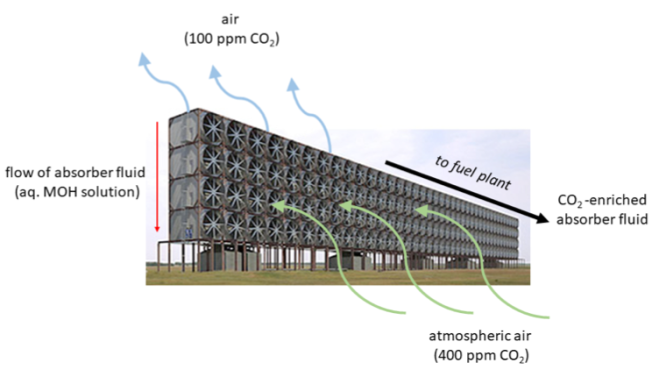
Formula 1’s new fuels are yet to be defined in detail but it could go towards synthetic fuels that are being produced by a Canadian company called Carbon Engineering. This was established in 2009 by a David Keith, an experimental physicist, with a PhD from the Massachusetts Institute of Technology, who has worked on climate science and energy technology for more than 20 years. In addition to his role at Carbon Engineering, Keith is also a professor at Harvard.
Keith’s idea was to remove carbon dioxide from the atmosphere using a technology called direct air capture (DAC). This captures CO2 from the air (below) and uses sodium hydroxide to create a stable sodium carbonate which is then heated to produce pure CO2. This can then be converted into a solid form, which can be stored underground. It can also be converted into synthetic fuel, using technology developed 100 years ago by Professor Franz Fischer and Dr Hans Tropsch at the Kaiser-Wilhelm-Institut for Chemistry in Dahlem, a Berlin suburb close to the AVUS race track. The Fischer–Tropsch process helped to produce synthetic fuels in Germany during World War II and was later used in South Africa, where the oil company Sasol employed the technology.
Carbon Engineering has developed a system to convert CO2 into synthetic crude oil, a process it calls ‘Air to Fuel’, which then leads to more traditional refining into liquid fuels that can use existing fuel distribution and transportation infrastructure and is thus be much easier and more cost-effective to implement in the future.

Carbon Engineering markets the fuel as being a ‘negative emission’ product. The problem with this is the cost involved but drops in the prices of electrolysis and carbon neutral electricity, coupled with new regulatory incentives for low carbon fuels, mean that carbon neutral synthetic fuels can now be economically-viable and competitive with biofuels. The fuel has an energy density many times higher than any existing battery.

Source: JSBM